Everyone wants to enjoy the outdoors on their own terms. Even though basic human needs are the same, some people have a high tolerance for getting along without stuff that others wouldn’t dream of leaving the house without. Few campers have the same priorities and desires, and deciding what to bring camping will result in distinctly different piles of gear for almost everyone.
There are different types of camping, but all of them will require you to think carefully about what you will need long before you start packing. In fact, the anticipation of what you may encounter and what you will need to respond to new challenges is all a part of your next vacation.
Types of Camping
- Wild Camping is regarded by enthusiasts as the ‘pure’ camping experience and stretches the concept of “getting away from it all” as far as it can possibly go. The rule is “if you can’t carry it, you don’t need it” and enthusiasts take only the most lightweight gear and bare essentials for a stay while hiking, climbing or hunting in remote or deserted areas. Wild Camping may be prohibited in some regions, or subject to special permission.
- Campsite Camping is vastly popular, as can be confirmed from the long lists of campsites for hire across the country and the world. Dedicated campsites rent out individual pitches or stands in areas where there are other holidaymakers. Campsites have facilities such as communal toilets, washrooms, electricity on demand and sometimes even small shops where you can buy essential goods or food. You can usually get all your gear to the site in a car which enables you to lug along a lot of extras to make your experience very comfortable. This is a great way for the entire family, kids (and sometimes pets) included, to meet the great outdoors.
- Festival or Event Camping can be regarded as a ‘compressed’ variant of campsite camping, with fewer facilities and a whole lot more people! You will probably resort to only the lightest, cheapest and most versatile gear like a popup tent, but apart from a barbecue with friends, you are unlikely to need provisions, do much cooking or perform survivalist feats.
- Glamping (Glamorous Camping) is the ultra-luxurious side of camping and is regarded with skepticism by most purists. Just having electricity for a cooler and lights and water on tap at your camping site does not officially make you a glamper, but taking all of the mod cons along to a supposedly ‘wild escape’ probably will.
The Less You Take, The More You Get
The simple joy of realizing that you can get along without almost every single thing you have in your home can be one of the most liberating experiences of your life.

Credit Image: vividvegetarians.wordpress.com
Add to this the chance to see sights and places few people ever get to see, the exhilaration of testing your mental and physical abilities against nature and the realization that life need not be all that complicated, and you have the makings of one of the most valuable experiences of your life.
The Less You Take, The Better You Have To Plan
Planned activities like climbing or hiking, the places or area you are going, season and time of year and the duration of your trip will dictate your needs. If you are new to camping, you are unlikely to have everything you need on hand, and conversely, you may even know you won’t use some of the gear which other campers regard as critical. Get only the bare essentials, and then borrow or bargain for gear until experience teaches you which items to regard with reverence – or get along without.
The Secret Is A Master Activity Checklist
Whether you are a lifelong camper, an ‘old hand’ at outdoor life, or a family with constantly changing needs: make a list. Don’t just get “the ultimate list of camping gear” from somewhere on the internet and start buying. We have compiled a list of essentials, but we advise you to evaluate each for your own needs.
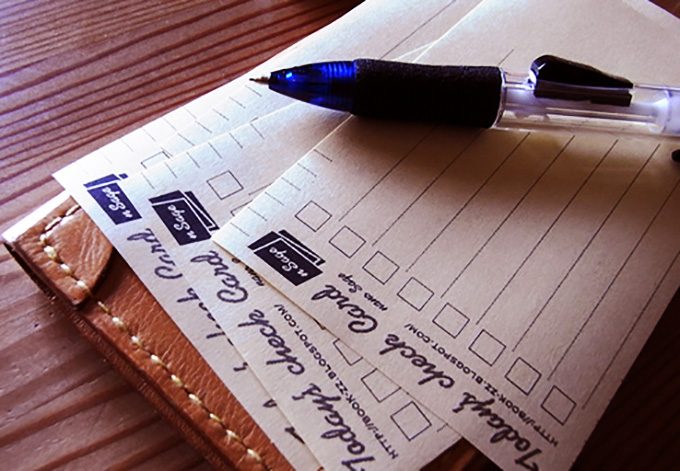
Contrary to popular advice, don’t start by making a list of ‘essential camping gear.’ Start by making an activity list first.
10 Things You Always Need for Camping
- Water Supply: Take along some clean water, or if your camping site provides water, take along some canisters and containers to carry water to your camping site. You cannot live without water.
- Tent or Shelter: Make sure everyone will fit! Try to buy one size bigger than you think you need to allow more room for everyone to maneuver in. Accessories include a tent porch, tent pegs, mallet and a fly sheet. Practice pitching the tent before you head into the wilds. Always set it up on soft, flat ground but avoid low-lying areas in hilly country in case of heavy rain. A tarpaulin or groundsheet is a piece of heavy-duty nylon or fabric placed under your tent for protecting the built-in tent floor. It extends a ‘safe to walk’ area around your tent for bare feet and also helps to limit sand, mud, and insects from getting into the tent. It can also be extended over the tent or hung above your kitchen area to protect you from rain.
- Matches: Even if you are very experienced in survival skills and can get along without them, matches save time and makes life a lot more pleasant for campers. Waterproof matches or butane lighters are a good idea. Investigate camp stoves or burners, or stick to a wood or charcoal-fueled fire. Here’s our piece on the best waterproof matches to help you stay warm and safe while camping.
- Cooking Gear: You will need at least one fireproof pot or pan. A cutting board, wooden spoon, tongs, a bowl for mixing or serving (or use multi-purpose food containers), can opener, dishpan for dishwashing, carrying and storing, a can opener and aluminum foil for cooking on the fire. You will also need a plate, mug, and bowl plus utensils. Mess kits and plastic or steel equipment are lightweight and durable. Do not rely on food coolers to keep meat and delicate foods fresh for long and always stow securely.
- Food: Energy-rich food and snacks like trail mix, nuts, no-cook oatmeal, dehydrated vegetables, pasta, tinned beans and meat are good basics, though not the only options by a long shot. You will probably survive without herbs and spices, but don’t forget to pack salt! You can cook almost any modern meal using a combination of fire and camp stoves.
- Bedding: A sleeping bag is excellent, but add a sleeping pad to insulate your body from the ground and provide comfort. An air mattress or camping bed is more luxurious and can be used with sheets and blankets just as if you are at home. A pillow is a very good idea, or you can use an extra sack stuffed with clothing
- Light: Propane or butane lanterns and candles are fine for outside use. Battery-powered or electrical lamps can be used inside your shelter. Always carry a flashlight and/or headlamps with extra fresh batteries
- Utility Gear: A good pocket knife and multitool is worth some investment and will contain a knife, scissors, pliers, corkscrew, bottle opener, saw and much more. Navigation essentials like a compass and area maps are always a good idea as you may not have access to cell phone signals or your GPS. See our article on the best hiking compass to help navigate your way.
- Personal Gear: Always use sunscreen, and keep a good insect repellent at hand. Investigate wearing EDC articles like a Paracord bracelet or lanyard with a whistle to call for help. Use nature-friendly and biodegradable soap, detergents, and shampoos. Try to layer your clothes so that you always have something warm or preferably all-weather proof at hand. The weather can change in an instant, leaving you in wet clothes and exposed to a cold wind.
- First Aid Kit: Small scratches, burns or cuts are bound to occur. Keep your kit up to date with bandages, plasters, painkillers, antihistamines, tweezers, soothing lotions, a disinfectant, and anti-bacterial salve.
Step 1 – Draw Up An Activity List
Run through every possible scenario in your mind, and break it down to basic steps. A simple: “we get there, pitch the tent, make a fire and relax” will not cut it. In fact, novice and experienced campers have been known to arrive at the site later than they planned, couldn’t pitch the tent in the dark, found that they had left behind the tent pens and forgotten the matches.
Spending a pitch dark night in your car after dining on peanut butter scooped from the jar with your fingers is a very educational experience!
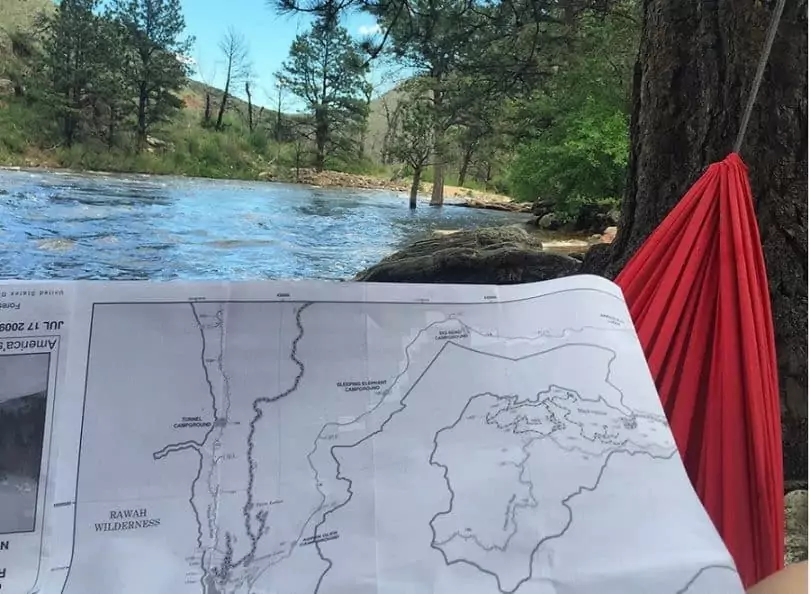
A sample activity list will include: arrival at your destination, unpacking your gear, exploring your immediate surroundings, setting up shelter, taking part in a planned activity, eating, washing, relaxing and sleeping. You should focus on gear associated with these activities.
Step 2: Identify The Items You Need For Each Action
Now that you have identified some of the things you care about, carefully compile a list of what you believe is necessary according to your needs. This is your list, not everyone else’s. It need not be a long one, but it must be well considered. It may include necessary medication and activity-specific gear like a fishing rod or hiking poles.
Step 3 – Categorize The Items
First jot down the items you consider to be essential and then start listing the things that would be “nice to have” on your trip.
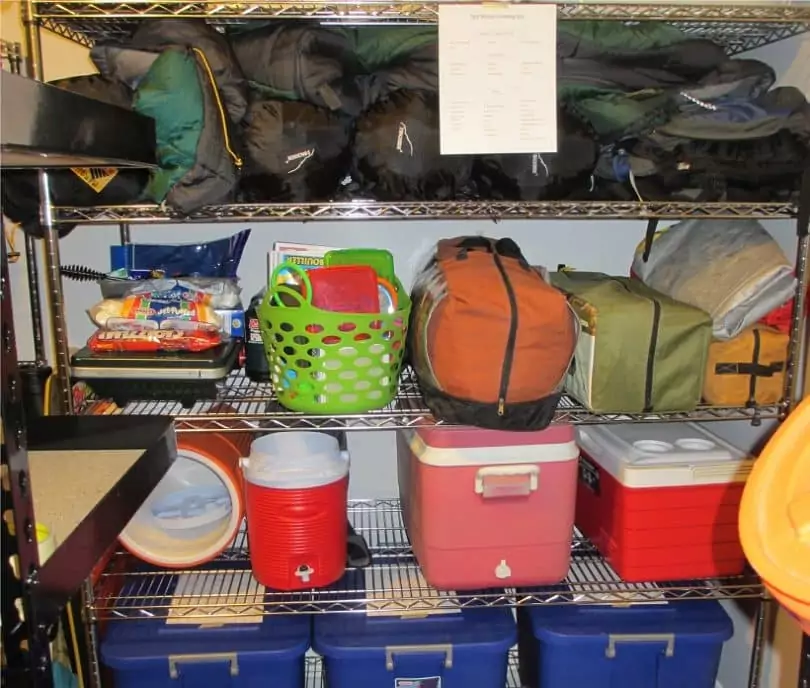
To help you get started, here are the categories to use for a list of items commonly regarded as necessary:
- Category 1: Water. Water, or containers to hold sufficient water for your needs, if water is readily available at your destination. It is easy to forget the importance of water while you only have to open a tap to get a glass of water, but depending on your destination, you could spend a considerable part of your day obtaining enough safe water to survive.
- Category 2: Food. You can choose to take along ration packs, easy to prepare meals, tinned food, dehydrated food or fresh food. It is entirely possible to go camping in magnificent natural surroundings that are within relatively easy reach of shops where you can replenish fresh food daily, but you probably won’t want to.
- Category 3: The means to cook and/or preserve your food. The types of food you take along will dictate your cooking needs. You may not want to light a fire just to make a cup of coffee, so a choice of cooking equipment like can be handy. You will need pots or pans, something to boil water in, utensils and bowls or plates to eat from. A cooler won’t keep food like meat or dairy fresh for too long, and you should plan your meals to prevent waste.
- Category 4: Shelter. You need to keep dry, or you won’t be comfortable. A tent is a splendid idea, unless you plan on practicing your survival skills by building a shelter. Do a dry run and practice pitching your tent before you go to make sure you understand the process, can accomplish it without asking strangers for help and have all the necessary equipment. For the best family tent for camping, check out our link for more information.
- Category 5: Light. The outdoors is dark at night – there are no street lamps or general lighting. While the moon and stars might light your way on a clear night, you will undoubtedly have to watch what you are doing while cooking, washing, getting ready for bed and in emergencies. Flashlights with fresh batteries are critical, and you need an additional light source such as a propane or butane lantern or an electric lamp if your campsite offers the amenity. Don’t rely on candles as your sole source of light, they are far too dangerous ever to use inside your tent. Don’t forget out solar panel charges. See our article on the best compact solar charges for all your essential gadgets.
- Category 6: Planned activities. This will include your climbing, hiking, fishing or hunting gear. Families with small children may want to consider games and activities to keep the kids safely occupied and content while you get on with daily camping chores.
- Category 7: A backup plan. Always make sure you have a first-aid kit and know how to use it. You and your companions should know how to reach help if you need it. You cannot rely on cell phones, as coverage may be a problem in remote areas. Let your friends and family know where you are going and what your plans are if they should need to get hold of you. Provide them with license plate and phone numbers, including details of the local authorities at your destination. See our article on the top solar radio for emergencies to keep you abreast with the news.
Always follow the rules that may be imposed by your hosts or the management of your destination. They are there for your safety and the safety of all the other visitors.
Step 4 – Research Your Destination Thoroughly
You may find that your campsite offers facilities such as washrooms and electricity at every stand. In that case, your needs won’t change, but the items you need to fulfill your needs will change. For example:
Your list contains: Water
Now that you know that water is available on tap, you won’t need large containers of fresh water and sparing use to make it last until you get home. You will rather need a sizeable, sealed container, possibly with a tap, which you can refill daily to keep near your cooking area for hand washing, drinking, and cooking.
Your list contains: Light
Now that you know electricity is available, you don’t need to purchase a lot of replacement batteries for flashlights. You should rather invest in a heavy-duty extension cable with multi-plugs for an electrical lamp and battery charger, perhaps in addition to a headlamp. Always keep a flashlight handy.
Step 5 – Compare Your List And Review
It is so easy to miss an item.
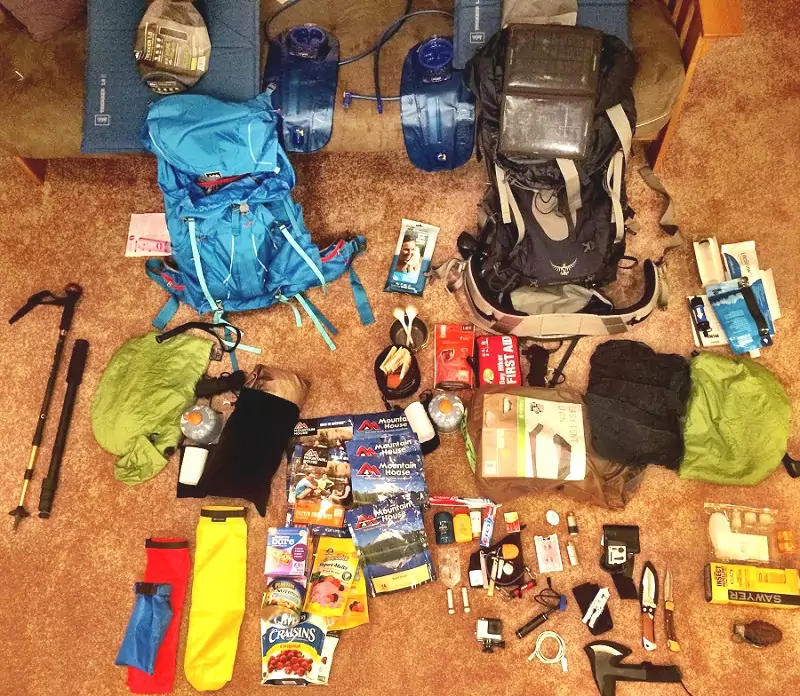
While just making this list is a pleasant way to anticipate your carefully planned break, it is entirely possible that you will arrive at the camping site without tin opener or matches. If it is a brand new destination, or you don’t have a lot of camping experience, you might miss an essential piece of gear. Compare your list to this list (LINK), finalize and start collecting.
Step 6 – Don’t Miss Anything When You Pack
Stick to your list like glue. Keep your list at hand when you pack for your adventure, and tick off each item as you load it. Never rely on buying something in the nearest town before you get to your destination. Finding a 6-person tent, propane lantern or even 10 fresh AA batteries after hours in Remoteville, pop 127 might be a senseless mission.
Step 7 – Get Out There And Have Some Fun
We trust you will now have a solid idea of what you need to bring when you go camping. Making your own list by anticipating all the great things you will be doing during your adventure is far more satisfying than just following a formula. However, just to be sure you have a good starting point, we have made you a list of very useful things, just to get you started:
A Few Last Tips
Gaffer tape and Paracord always come in handy for quick onsite repairs, and pack some garbage bags for wet clothes or shoes, rubbish, and even makeshift weather protection. See our must-read article on how to make a paracord survival belt before you leave for camp.
Do a dry run before you leave – pitch your tent and cook a meal using your camping gear before you pack everything away securely using your checklist to ensure you don’t forget a thing.
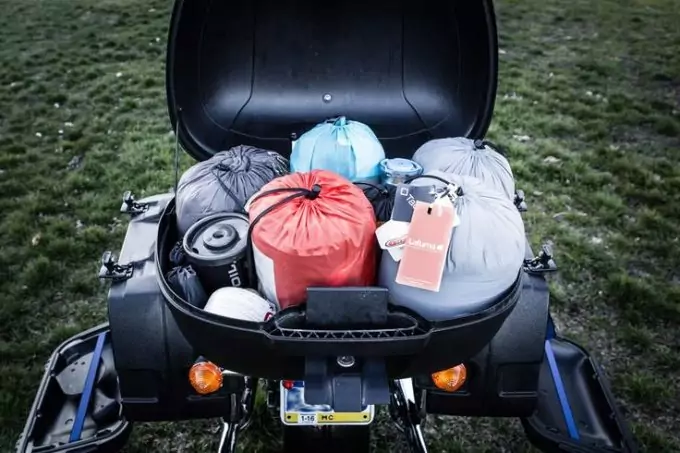
Always wash and dry every piece of equipment thoroughly before you pack it away after your trip. Discovering that you forgot to clean up when you pull out a musty, stained tent on your next trip is unpleasant. Remove your trash and leftover food, and clean up before you leave a site.
So now that you know what to take camping, here is the one golden rule of outdoors life: Never leave anything more than your footprints; take all of your belongings and garbage with you when you leave. Your campsite isn’t your home, so leave it clean for the next set of campers, as well as the wild animals who do call it home.

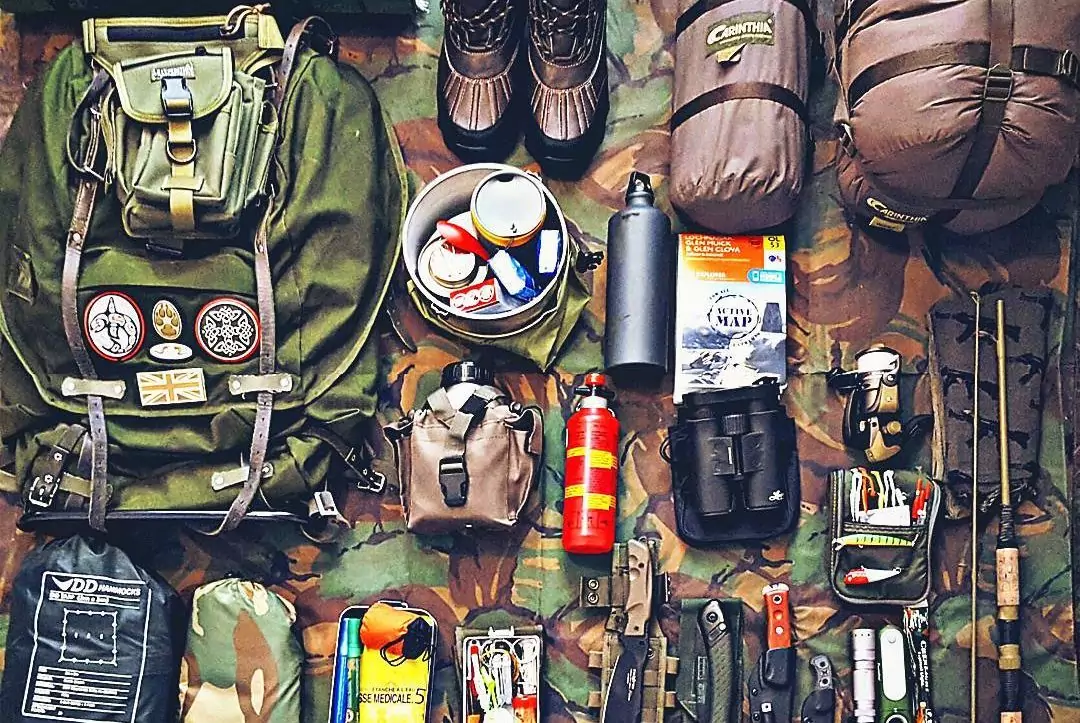




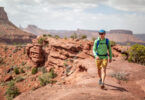

It’s always about the planning, isn’t it? I camp fairly frequently, and set aside time after my camping trip to go through my “go box” as I call it, to repair or replenish depleted supplies within it. Those first few years, though, it was either, “I forgot….” or unpacking at the end with so much unused gear and supplies made it much more of a chore than it needed to be. Breaking it down to those essentials is crucial.
Buying replacements on the road can be expensive if it’s possible (so many stores these days carry very little inventory on specialty items). Great article Henry!
I hope the checklist will help you plan what to bring. You can add or omit some things from the list as you go along. As I always say: pack light! That’s why it’s so important to buy quality gear that are lightweight and compact.
This is such an excellent ‘How to prepare for camping’ article. I am keeping it handy as a checklist for the next family camping trip. It is an awesome guide for a new camper who needs a detailed guide on how to prepare and what to pack for their first camping trip, but it is also good for the seasoned camper who just needs a checklist to be sure they don’t leave anything behind.
Thanks Joyce! Based on my experience as a camper, there’s a lot of things that people tend to forget when they’re in a hurry (or too excited) to leave for the great outdoors. The list will help and guide you so you’ll never leave anything behind again! You can even add more items to my list according to what you’ll be needing.